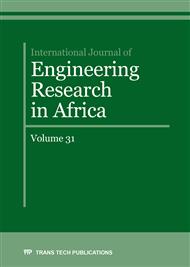p.14
p.20
p.29
p.36
p.44
p.53
p.59
p.69
p.77
Analysis on the Factors of Surface Morphologies on Si3N4 Ceramic Internal Grinding
Abstract:
Different grinding parameters of silicon nitride ceramic are researched at the process of internal grinding. The influences on the roughness of surface by the linear speed of grinding wheel (vs), radial feeding speed (f) and axial vibration speed (fa) are studied in the uniformity testing. The experimental equation of silicon nitride ceramic internal grinding is optimized. The machined surface morphologies of the ceramic specimen are measured by roughness instrument of Taylor-Hobson Surtroni-25 and scanning electron microscope of S-4800. The results show that with the increasing of the linear speed of grinding wheel the roughness of surface get reduced, and with the increasing of radial feeding speed the roughness of surface get raised. It is also inversely proportional to the axial vibration speed. The linear speed of grinding wheel has the biggest impact on the roughness of surface of the silicon nitride ceramic internal grinding among the three grinding parameters. With the increasing of linear speed of grinding wheel, the value of roughness of surface declines from 0.4095μm to 0.1726μm. The influences on the roughness of surface of the silicon nitride ceramic internal grinding by different factors are found out in the research, and its removal mechanisms are cleared up under different linear speeds of grinding wheel.
Info:
Periodical:
Pages:
44-52
Citation:
Online since:
July 2017
Authors:
Price:
Сopyright:
© 2017 Trans Tech Publications Ltd. All Rights Reserved
Share:
Citation:


